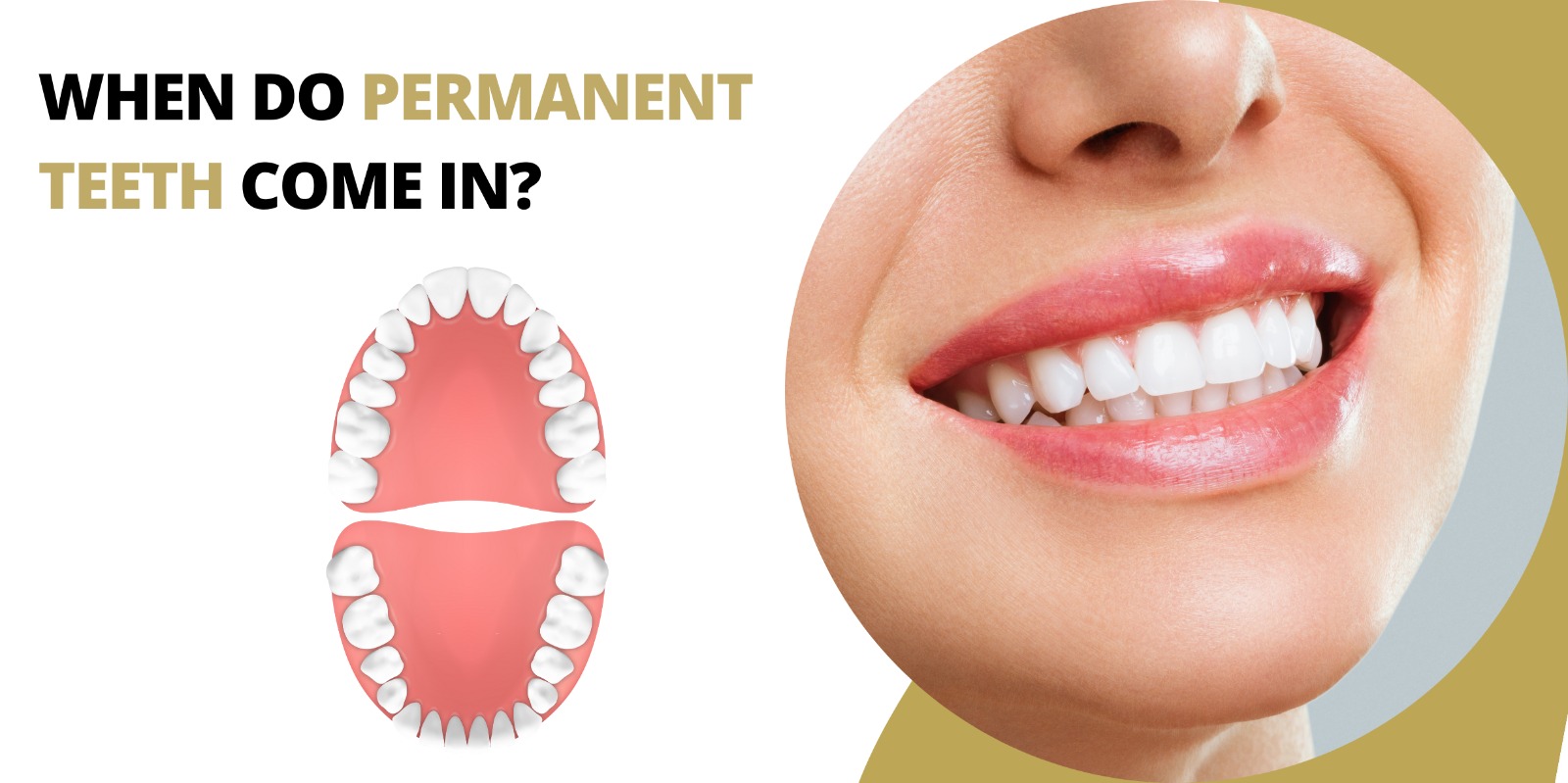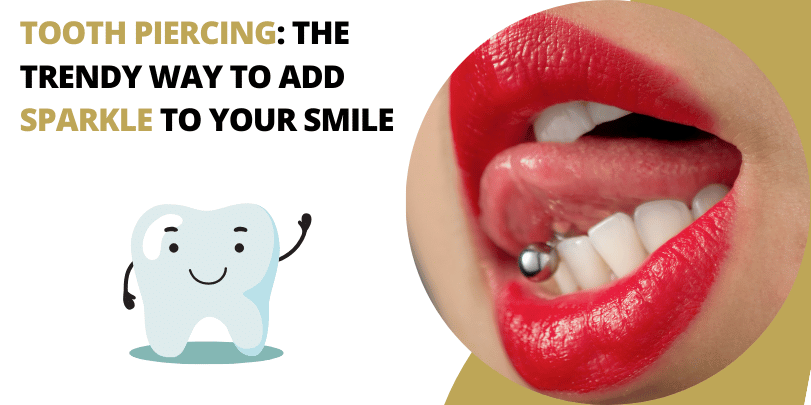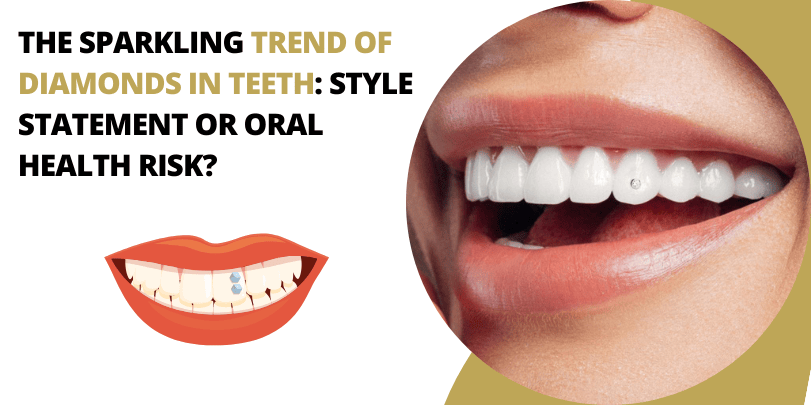When do Permanent Teeth Come in?
Table of Contents
As parents or caregivers, it is important to keep an eye on your child’s dental development. The emergence of permanent teeth marks an exciting phase in a child’s growth and is important for the formation of a healthy adult smile. If you are wondering when permanent teeth come in, the process is gradual and typically begins when your child is around six years old and continues into early adulthood.
Understanding this process, what to expect, and how to take care of your child’s teeth during this time is necessary to ensure proper dental health.
In this blog, we will understand when permanent teeth come in, the order in which they emerge, and important factors that can affect the timing and development of your child’s adult teeth.
Let’s get started!
Also read-: Common Signs Your Wisdom Teeth Are Coming In
The Journey from Baby Teeth to Permanent Teeth
Everyone starts out with a set of primary or baby teeth, which eventually fall out to make room for permanent teeth. Baby teeth begin to emerge when a child is about six months old, and by the time they are around three years old, most children have a full set of 20 primary teeth. These teeth play a vital role in speech development, chewing, and maintaining space for the permanent teeth to come in.
Permanent teeth start replacing the baby teeth around the age of six and continue emerging until a person is about 21 years old. By the time the adult set of teeth is fully in place, the total number of teeth in the mouth will be 32, including the third molars, commonly referred to as wisdom teeth. The process of the permanent teeth coming in is gradual, and most people get their last set of wisdom teeth when they are in their late teens or early twenties.
When Do Permanent Teeth Come In? A Typical Timeline
The timing of when permanent teeth come in can vary from one child to another. However, there is a general pattern that most children follow. Here is a breakdown of the typical age ranges when each set of permanent teeth comes in:
First Molars: The first permanent teeth to appear are the first molars, often called the “six-year molars.” These molars typically come in around the age of six to seven years. These teeth are important for grinding food and often serve as the first major teeth of the permanent set.
Central Incisors: The central incisors, which are the front teeth, generally emerge between the ages of six and seven years. The lower central incisors typically come in first, followed by the upper central incisors.
Lateral Incisors: The next set of permanent teeth to emerge are the lateral incisors, which are located beside the central incisors. These usually come in between the ages of seven and eight years. Again, the lower lateral incisors tend to come in first, followed by the upper ones.
First Premolars (Bicuspids): The first premolars, also known as bicuspids, begin to come in around the ages of ten to eleven. These teeth are important for chewing and grinding food.
Canines (Cuspids): The canines, also known as cuspids, typically emerge between the ages of eleven and twelve for the upper teeth, and nine to ten for the lower teeth. Canines are pointy teeth located beside the incisors and are key for tearing food.
Second Premolars (Bicuspids): The second premolars usually emerge between the ages of ten and twelve. Like the first premolars, they are used for grinding food.
Second Molars: The second molars come in around the ages of twelve to thirteen. These teeth are large and are also used for grinding food.
Third Molars (Wisdom Teeth): The last permanent teeth to emerge are the wisdom teeth, also known as third molars. These typically come in between the ages of seventeen and twenty-one, although some people may not get wisdom teeth at all or may need to have them removed due to dental issues like impaction.
Also Read – Dealing with Wisdom Teeth Gum Pain
Wisdom Teeth: Should You Keep Them or Remove Them?
It’s important to note that not everyone follows this timeline exactly. Children may experience earlier or later tooth eruption, and that is usually no cause for concern. However, if there are any doubts or delays, it is a good idea to consult a dentist.
Factors That Affect Tooth Eruption
The timing and sequence of when your child’s permanent teeth come in can be influenced by a variety of factors. While genetics play a major role, other aspects can also impact the eruption process. Some of these factors include:
Genetics: If there is a family history of early or late tooth eruption, your child may follow a similar pattern. Teeth eruption tends to follow the same general timeline within families.
Nutrition: A well-balanced diet with essential vitamins and minerals supports healthy teeth development. Calcium and vitamin D are especially important for the growth of strong, healthy teeth.
Health Conditions: Certain health conditions, like hormonal imbalances or genetic disorders, can affect the timing of tooth eruption. If your child has a medical condition, it might influence their dental development.
Environmental Factors: External factors like fluoride levels in the drinking water or the presence of certain chemicals can also influence how and when permanent teeth come in.
Why Is Tooth Development Important?
As permanent teeth begin to emerge, it’s crucial to maintain good oral hygiene practices to ensure the health of your child’s teeth. Proper brushing, flossing, and regular dental check-ups help prevent decay and ensure the teeth come in properly. By caring for your child’s teeth early on, you can help avoid complications and make the transition to adult teeth smoother.
What Happens If There Are Problems with Permanent Teeth?
While the majority of children experience a normal eruption pattern for their permanent teeth, some may face challenges, such as:
Impacted Teeth: Teeth that do not have enough space to emerge or grow in the wrong direction may be impacted. This is common with wisdom teeth but can also affect other teeth. If you notice any unusual signs or symptoms, such as pain or swelling, consult your dentist.
Missing Teeth: In some cases, children may not develop one or more of their permanent teeth. This can happen due to genetics or developmental issues. Your dentist can discuss options for replacement or restoration.
Delayed Eruption: If a child’s permanent teeth are delayed in coming through, it may be due to a variety of reasons, including genetics or health issues. It’s always best to get professional advice if you are concerned about a delayed eruption.
Final Thoughts
The process of permanent teeth coming in is an exciting phase of growth, but it also requires care and attention to ensure that your child’s teeth develop properly. Knowing when to expect each tooth and being mindful of any potential issues can help you take steps to support your child’s oral health. Always remember that regular dental visits are needed to monitor your child’s dental development and address any concerns early on.
Written by DR. PUNEET KATHURIA B.D.S., M.D.S., F.I.C.O.I. (USA)
 Australia No
Australia No Canada No
Canada No India Toll Free No
India Toll Free No UK No
UK No USA No
USA No











